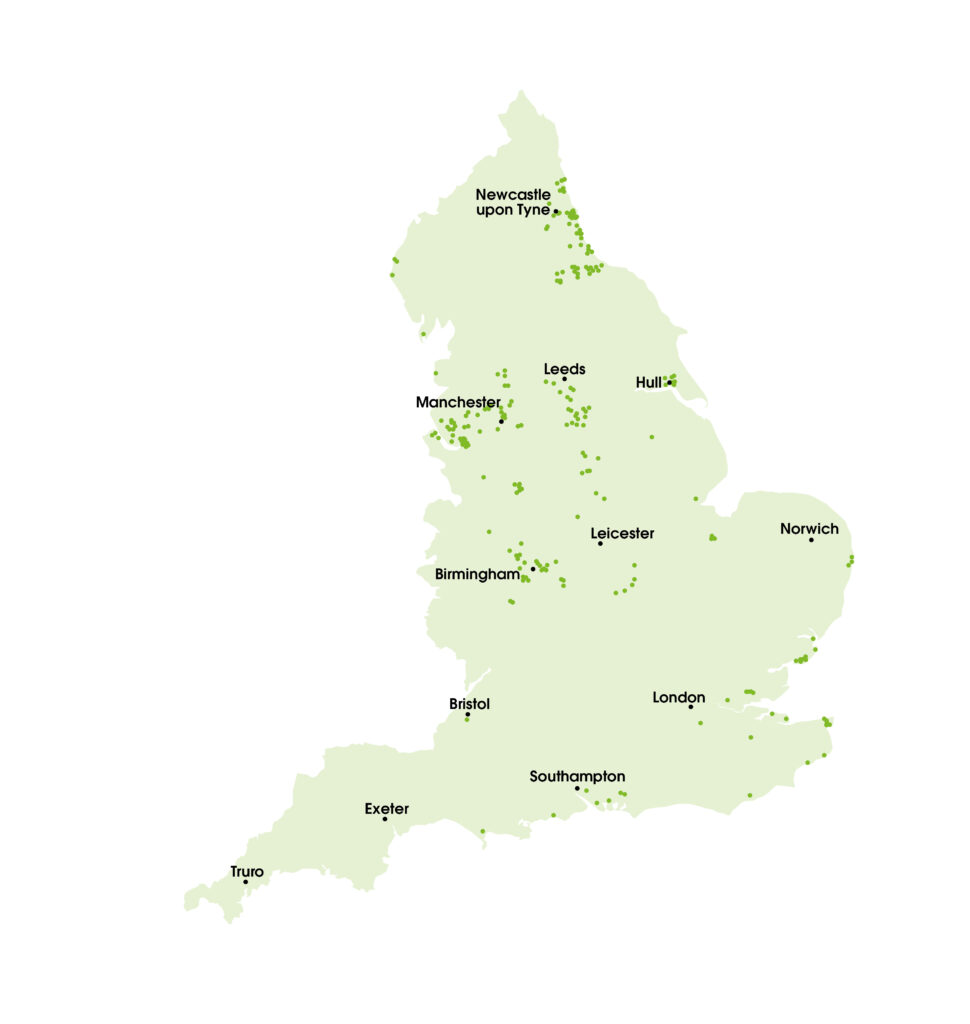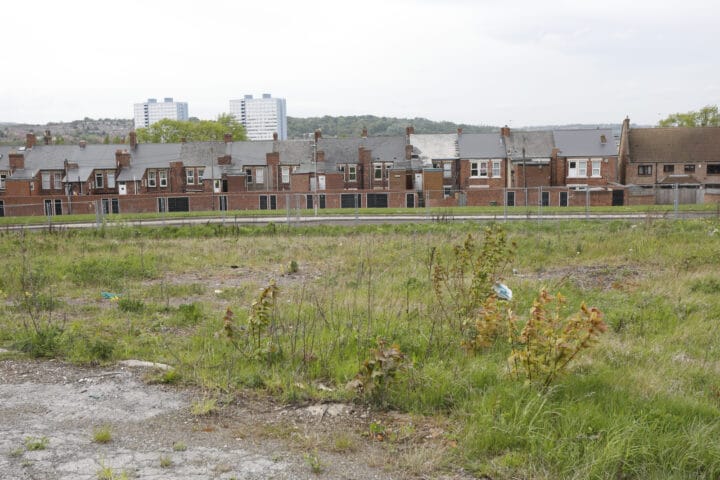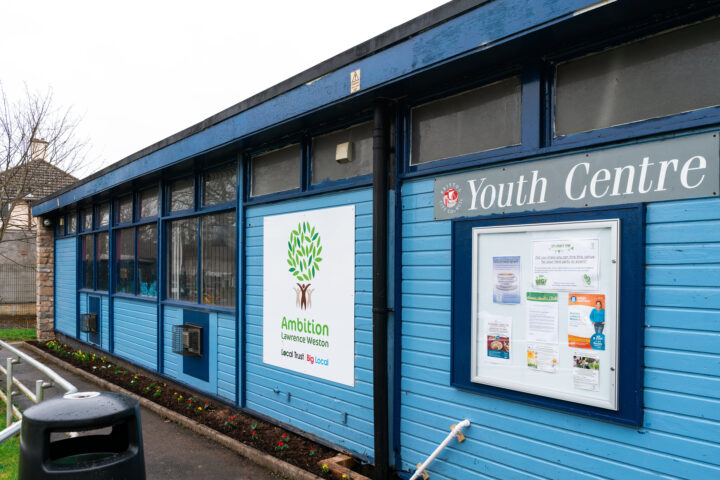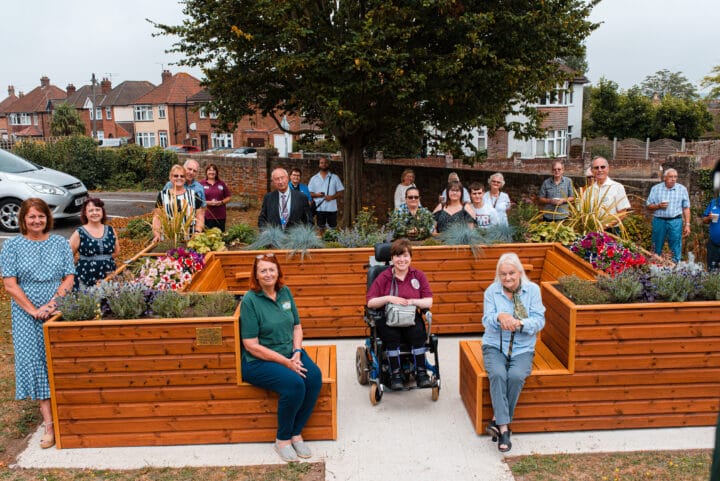-
About
About
Local Trust is a place-based funder supporting communities to achieve their ambitions.
Find out moreGo straight to…
< Back to main menu -
Big Local
Big Local
Big Local is an exciting opportunity for residents in 150 areas to create lasting change in their communities.
About the programme< Back to main menuSupport centre
Essential guidance, information and ideas for Big Local partnerships, to help you deliver change in your community.
Visit the support centre -
Other programmes
Other programmes
Find out how the principles of Big Local have inspired other programmes creating change in local communities.
< Back to main menuCommunity Leadership Academy
Supporting volunteers involved in Big Local projects to develop their skills and knowledge.
Find out moreCreative Civic Change
This new approach to funding enabled communities to use art and creativity to make positive local change.
Find out more
-
News and stories
News and stories
The latest news and stories from Big Local areas and beyond, exploring community power and resident-led change.
ExploreGo straight to…
< Back to main menuVoices of Big Local
Inspiring stories from the people making change happen in their communities.
Read more - Insights
- Policy

-
About
About
Local Trust is a place-based funder supporting communities to achieve their ambitions.
Find out moreGo straight to…
< Back to main menu -
Big Local
Big Local
Big Local is an exciting opportunity for residents in 150 areas to create lasting change in their communities.
About the programme< Back to main menuSupport centre
Essential guidance, information and ideas for Big Local partnerships, to help you deliver change in your community.
Visit the support centre -
Other programmes
Other programmes
Find out how the principles of Big Local have inspired other programmes creating change in local communities.
< Back to main menuCommunity Leadership Academy
Supporting volunteers involved in Big Local projects to develop their skills and knowledge.
Find out moreCreative Civic Change
This new approach to funding enabled communities to use art and creativity to make positive local change.
Find out more -
News and stories
News and stories
The latest news and stories from Big Local areas and beyond, exploring community power and resident-led change.
ExploreGo straight to…
< Back to main menuVoices of Big Local
Inspiring stories from the people making change happen in their communities.
Read more - Insights
- Policy
‘Left behind’ neighbourhoods
We define ‘left behind’ areas as places which face the double disadvantage of high deprivation and a lack of social infrastructure.
In 2018, we commissioned the Oxford Consultants for Social Inclusion (OCSI) to develop new data analysis to explore the difference that social infrastructure makes to outcomes in deprived communities.
Our experience of delivering the Big Local programme indicated that social infrastructure – defined as places and spaces to meet, connectivity (physical and digital) and community engagement – is a key determinant of the prospects of neighbourhoods and their residents.
This original, foundational, research identified 206 ‘left behind’ neighbourhoods across England. An update in 2020, to take account of changes to the Index of Multiple Deprivation, showed 225 wards falling into this category.
While our policy work increasingly refers to these areas as ‘doubly disadvantaged’, you’ll see both terms used interchangeably within our outputs and publications.
Combining data from two indices – the Index of Multiple Deprivation (IMD) and the Community Needs Index (CNI), which we partnered with OCSI to create – makes it possible to identify those neighbourhoods which face the double disadvantage of being severely deprived and having the least social infrastructure in the country.
These neighbourhoods are predominantly in post-industrial and coastal areas in the North and the Midlands. Their residents have markedly worse socio-economic outcomes than the residents of other equally deprived areas. This suggests the value and importance of social infrastructure.
Research has found that doubly disadvantaged neighbourhoods experience greater challenges across a range of life outcomes, including higher rates of poverty, lower educational attainment, and worse population health.
We have continued to collect data and improve the methodology for the research so we can better understand the social, economic and cultural dynamics of ‘left behind’ neighbourhoods to help develop responses which will enable them to prosper in the future.
- We commissioned OCSI in 2018 to assess levels of social infrastructure in all the wards in England. They looked at whether areas lacked three characteristics to create the CNI.
- Places to meet: Community, civic, educational and cultural assets in or in close proximity to the area
- An active and engaged community: Community and civic participation
- Connectedness: Connectivity to key services, digital infrastructure and a strong local jobs market
This Index is the first of its kind; it maps community need at a hyper-local level in a way that has not been done before. As such it is a powerful tool for analysing and understanding spatial inequalities at the neighbourhood level, and enabling comparisons between neighbourhoods.
The wards that rank in the top 10 per cent most deprived on both the CNI and the Index of Multiple Deprivation are what we define as the most ‘left behind’ neighbourhoods in England. This analysis provided the first quantitative definition of what constitutes a ‘left behind’ area.
These communities suffer from the highest levels of combined economic and social deprivation – which is why we also refer to these areas as doubly disadvantaged neighbourhoods.
In 2022 we started to review and update the Community Needs Index, launching a consultation and engaging experts. The overarching aim was to refine the model, making use of the most up to date data and robust research approaches. The updated methodology which has now been published, will be used to provide further insights into the challenges and experiences of high needs communities.
We are not yet proposing to combine the 2023 Community Needs Index with the Index of Multiple Deprivation to produce a new list of ‘left behind’ or doubly disadvantaged areas. As a second phase review of our approach to the research we are exploring how best to do this.
We do not use ‘left behind’ to imply that the areas so described lack people with skills and commitment or a rich heritage. We know from our experience of the Big Local programme that the reverse is generally the case. However, such areas have tended not to receive their fair share of available investment and they therefore lack the services and facilities that many of us take for granted. It is these services and facilities that help to connect people in a community and bind them together, providing the opportunity for residents to develop and prosper. It is in this sense that they are ‘left behind’.
Local Trust was the secretariat of the All-Party Parliamentary Group for ‘left behind’ neighbourhoods, which was active between June 2020 and March 2024.
It was a cross party group of MPs and Members of the House of Lords, committed to improving social and economic outcomes for residents in communities that suffer from a combination of economic deprivation, poor connectivity, low levels of community engagement and a lack of community spaces and places.
‘Left behind’ neighbourhoods are largely concentrated in housing estates on the edges of our post-industrial towns and cities and in coastal areas, particularly in the North and Midlands, although there are areas to be found in pockets of deprivation along the South coast. The North East has 54 ‘left behind’ wards, whilst the North West has 56. The East Midlands has 17 wards and the West Midlands 31 whilst Yorkshire and the Humber has 28 wards. Meanwhile there are 16 wards across the South East, predominantly located along the coast.
There are very few ‘left behind’ neighbourhoods in London and other city centres. This is due to the proliferation of social infrastructure in these places, meaning that whilst they have significant problems with deprivation, they have low community need as defined by our Community Needs Index.
| Ward | Local authority | Region |
|---|---|---|
| Central & New Cross | Ashfield | East Midlands |
| Abbey Hulton and Townsend | Stoke-on-Trent | West Midlands |
| Adwick le Street & Carcroft | Doncaster | Yorkshire and The Humber |
| Airedale and Ferry Fryston | Wakefield | Yorkshire and The Humber |
| Alton Park | Tendring | East of England |
| Annfield Plain | County Durham | North East |
| Appleton | Halton | North West |
| Atherton | Wigan | North West |
| Avondale Grange | Kettering | East Midlands |
| Aycliffe West | County Durham | North East |
| Balby South | Doncaster | Yorkshire and The Humber |
| Balderstone and Kirkholt | Rochdale | North West |
| Barrow Island | Barrow-in-Furness | North West |
| Bartley Green | Birmingham | West Midlands |
| Becontree | Barking and Dagenham | London |
| Bede | South Tyneside | North East |
| Belle Vale | Liverpool | North West |
| Bentilee and Ubberley | Stoke-on-Trent | West Midlands |
| Bentley | Doncaster | Yorkshire and The Humber |
| Berwick Hills & Pallister | Middlesbrough | North East |
| Bestwood | Nottingham | East Midlands |
| Biddick and All Saints | South Tyneside | North East |
| Bidston and St James | Wirral | North West |
| Bilston East | Wolverhampton | West Midlands |
| Binley and Willenhall | Coventry | West Midlands |
| Bitterne | Southampton | South East |
| Blackhalls | County Durham | North East |
| Bloomfield | Blackpool | North West |
| Bloxwich West | Walsall | West Midlands |
| Blurton West and Newstead | Stoke-on-Trent | West Midlands |
| Bondfields | Havant | South East |
| Boscombe West | Bournemouth | South West |
| Brambles & Thorntree | Middlesbrough | North East |
| Bransholme East | Kingston upon Hull, City of | Yorkshire and The Humber |
| Bransholme West | Kingston upon Hull, City of | Yorkshire and The Humber |
| Breightmet | Bolton | North West |
| Brookside | Telford and Wrekin | West Midlands |
| Brunshaw | Burnley | North West |
| Byker | Newcastle upon Tyne | North East |
| Camp Hill | Nuneaton and Bedworth | West Midlands |
| Castle | Sunderland | North East |
| Charlestown | Manchester | North West |
| Cherryfield | Knowsley | North West |
| Choppington | Northumberland | North East |
| Clarkson | Fenland | East of England |
| Clifton South | Nottingham | East Midlands |
| Cliftonville West | Thanet | South East |
| Clover Hill | Pendle | North West |
| College | Northumberland | North East |
| Coundon | County Durham | North East |
| Cowpen | Northumberland | North East |
| Craghead and South Moor | County Durham | North East |
| Crewe St Barnabas | Cheshire East | North West |
| Dane Valley | Thanet | South East |
| Darlaston South | Walsall | West Midlands |
| De Bruce | Hartlepool | North East |
| Dearne North | Barnsley | Yorkshire and The Humber |
| Dearne South | Barnsley | Yorkshire and The Humber |
| Deneside | County Durham | North East |
| Easington | County Durham | North East |
| East Park | Wolverhampton | West Midlands |
| Eastcliff | Thanet | South East |
| Eston | Redcar and Cleveland | North East |
| Farnworth | Bolton | North West |
| Fenside | Boston | East Midlands |
| Ferryhill | County Durham | North East |
| Fieldway | Croydon | London |
| Folkestone Central | Folkestone and Hyth | South East |
| Gainsborough East | West Lindsey | East Midlands |
| Gamesley | High Peak | East Midlands |
| Gawthorpe | Burnley | North West |
| Golf Green | Tendring | East of England |
| Gorse Hill | Worcester | West Midlands |
| Grange | Gosport | South East |
| Grange | Halton | North West |
| Grangetown | Redcar and Cleveland | North East |
| Greenhill | North West Leicestershire | East Midlands |
| Halewood South | Knowsley | North West |
| Halton Brook | Halton | North West |
| Halton Castle | Halton | North West |
| Halton Lea | Halton | North West |
| Hardwick and Salters Lane | Stockton-on-Tees | North East |
| Harper Green | Bolton | North West |
| Harpurhey | Manchester | North West |
| Hartcliffe and Withywood | Bristol, City of | South West |
| Harwich East | Tendring | East of England |
| Hateley Heath | Sandwell | West Midlands |
| Headland and Harbour | Hartlepool | North East |
| Hemlington | Middlesbrough | North East |
| Hemsworth | Wakefield | Yorkshire and The Humber |
| Hendon | Sunderland | North East |
| Henley | Coventry | West Midlands |
| Hetton | Sunderland | North East |
| Hodge Hill | Birmingham | West Midlands |
| Horden | County Durham | North East |
| Hough Green | Halton | North West |
| Hyde Godley | Tameside | North West |
| Irwell | Rossendale | North West |
| Isabella | Northumberland | North East |
| Jesmond | Hartlepool | North East |
| Kings Heath | Northampton | East Midlands |
| Kings Norton | Birmingham | West Midlands |
| Kingshurst and Fordbridge | Solihull | West Midlands |
| Kingstanding | Birmingham | West Midlands |
| Kingswood & Hazel Leys | Corby | East Midlands |
| Kirkleatham | Redcar and Cleveland | North East |
| Kitty Brewster | Northumberland | North East |
| Knottingley | Wakefield | Yorkshire and The Humber |
| Langley | Sandwell | West Midlands |
| Lee Chapel North | Basildon | East of England |
| Leigh West | Wigan | North West |
| Little Hulton | Salford | North West |
| Littlemoor | Dorset | South West |
| Longbridge | Birmingham | West Midlands |
| Longdendale | Tameside | North West |
| Longford | Coventry | West Midlands |
| Longhill | Kingston upon Hull, City of | Yorkshire and The Humber |
| Loundsley Green | Chesterfield | East Midlands |
| Magdalen | Great Yarmouth | East of England |
| Maltby | Rotherham | Yorkshire and The Humber |
| Mandale and Victoria | Stockton-on-Tees | North East |
| Manor House | Hartlepool | North East |
| Marfleet | Kingston upon Hull, City of | Yorkshire and The Humber |
| Meir North | Stoke-on-Trent | West Midlands |
| Meir South | Stoke-on-Trent | West Midlands |
| Mersey | Halton | North West |
| Mexborough | Doncaster | Yorkshire and The Humber |
| Middleton Park | Leeds | Yorkshire and The Humber |
| Miles Platting and Newton Heath | Manchester | North West |
| Monk Bretton | Barnsley | Yorkshire and The Humber |
| Moorclose | Allerdale | North West |
| Moorside | West Lancashire | North West |
| Moss Bay | Allerdale | North West |
| Nelson | Great Yarmouth | East of England |
| Newbiggin Central and East | Northumberland | North East |
| Newgate | Mansfield | East Midlands |
| Newington | Thanet | South East |
| Norris Green | Liverpool | North West |
| North Ormesby | Middlesbrough | North East |
| Northwood | Knowsley | North West |
| Northwood | Thanet | South East |
| Norton South | Halton | North West |
| Norton South | Stockton on Tees | North East |
| Oak Tree | Mansfield | East Midlands |
| Orchard Park and Greenwood | Kingston upon Hull, City of | Yorkshire and The Humber |
| Page Moss | Knowsley | North West |
| Park End & Beckfield | Middlesbrough | North East |
| Parr | St. Helens | North West |
| Paulsgrove | Portsmouth | South East |
| Pemberton | Wigan | North West |
| Peterlee East | County Durham | North East |
| Peterlee West | County Durham | North East |
| Pier | Tendring | East of England |
| Pitsea North West | Basildon | East of England |
| Pitsea South East | Basildon | East of England |
| Poplars and Hulme | Warrington | North West |
| Princes End | Sandwell | West Midlands |
| Queensway | Wellingborough | East Midlands |
| Redhill | Sunderland | North East |
| Rock Ferry | Wirral | North West |
| Roseworth | Stockton-on-Tees | North East |
| Rother | Chesterfield | East Midlands |
| Rush Green | Tendring | East of England |
| Sandhill | Sunderland | North East |
| Sandwith | Copeland | North West |
| Seacombe | Wirral | North West |
| Shard End | Birmingham | West Midlands |
| Sheerness | Swale | South East |
| Sheppey East | Swale | South East |
| Shepway South | Maidstone | South East |
| Shevington | Knowsley | North West |
| Shildon and Dene Valley | County Durham | North East |
| Shirebrook North West | Bolsover | East Midlands |
| Shotton and South Hetton | County Durham | North East |
| Sidley | Rother | South East |
| Simonside and Rekendyke | South Tyneside | North East |
| Smallbridge and Firgrove | Rochdale | North West |
| Smith's Wood | Solihull | West Midlands |
| South Elmsall and South Kirkby | Wakefield | Yorkshire and The Humber |
| Southcoates East | Kingston upon Hull, City of | Yorkshire and The Humber |
| Southcoates West | Kingston upon Hull, City of | Yorkshire and The Humber |
| Southey | Sheffield | Yorkshire and The Humber |
| Southwick | Sunderland | North East |
| Speke-Garston | Liverpool | North West |
| St Andrew's | Kingston upon Hull, City of | Yorkshire and The Humber |
| St Anne's | Sunderland | North East |
| St Helens | Barnsley | Yorkshire and The Humber |
| St Marys | Tendring | East of England |
| St Michaels | Knowsley | North West |
| St Oswald | Sefton | North West |
| St Osyth and Point Clear | Tendring | East of England |
| Stacksteads | Rossendale | North West |
| Stainforth & Barnby Dun | Doncaster | Yorkshire and The Humber |
| Stainsby Hill | Stockton-on-Tees | North East |
| Staithe | Fenland | East of England |
| Stanley | County Durham | North East |
| Stechford and Yardley North | Birmingham | West Midlands |
| Stockbridge | Knowsley | North West |
| Stockland Green | Birmingham | West Midlands |
| Stockton Town Centre | Stockton-on-Tees | North East |
| Talavera | Northampton | East Midlands |
| Tong | Bradford | Yorkshire and The Humber |
| Town and Pier | Dover | South East |
| Trimdon and Thornley | County Durham | North East |
| Tunstall | Stoke-on-Trent | West Midlands |
| Valley | Rotherham | Yorkshire and The Humber |
| Vange | Basildon | East of England |
| Wakefield East | Wakefield | Yorkshire and The Humber |
| Walker | Newcastle upon Tyne | North East |
| Walton | Tendring | East of England |
| Warndon | Worcester | West Midlands |
| Warren Park | Havant | South East |
| Washington North | Sunderland | North East |
| Waterlees Village | Fenland | East of England |
| Weoley | Birmingham | West Midlands |
| West Heywood | Rochdale | North West |
| West Middleton | Rochdale | North West |
| Whiteleas | South Tyneside | North East |
| Windy Nook and Whitehills | Gateshead | North East |
| Wingfield | Rotherham | Yorkshire and The Humber |
| Woodhouse Close | County Durham | North East |
| Woodhouse Park | Manchester | North West |
| Woolsington | Newcastle upon Tyne | North East |
| Yarmouth North | Great Yarmouth | East of England |
| Yew Tree | Liverpool | North West |
Our work on 'left behind' neighbourhoods
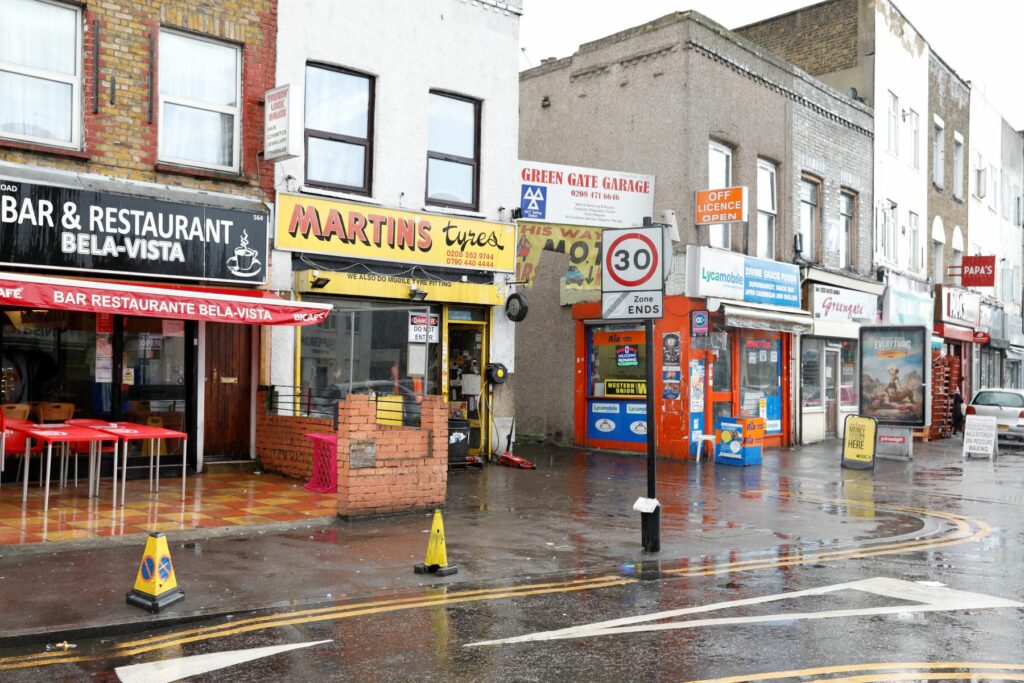
'Left behind' neighbourhoods news and opinion
Our new website launches January 2026 with 15 years of Big Local insights. Sign up to our newsletter to stay updated.
Our new website launches January 2026 with 15 years of Big Local insights. Sign up to our newsletter to stay updated.
